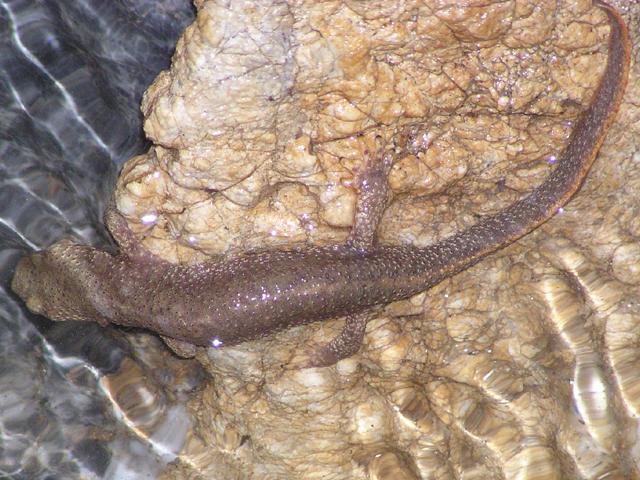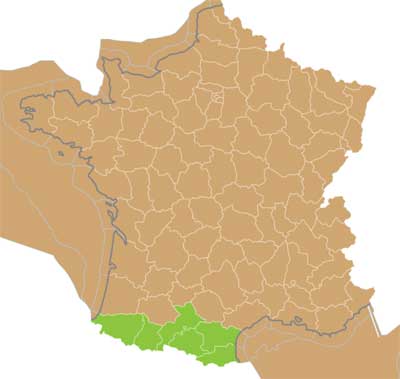

Pyrenean Brook Salamander or Pyrenean Brook
Newt.
Calotriton asper
formally
Euproctus asper
Euprocte des Pyrénées
Long classified in
the genus Euproctus this
urodele is now classified in the genus
Calotriton because it belongs
to an evolutionary line quite distinct from that of the "true Euproctes"
of Corsica and Sardinia: it is actually closer to the great newts of the
genus Triturus (Marbled Newt,
Crested Newt) than Euproctus.
The head, trunk and tail are bristling with
characteristic conical micro-warts (hence the name of the species, "asper"
from the French "aspérité") and the fingers end in blackish
pseudo-claws that allow the animal to effectively grip immersed rocky
substrates, even where there is a noticeable current. The general colour
of the body is blackish, brownish or greyish, with the exception of a
yellow vertebral band (sometimes yellow spots are scattered on the
flanks) and a red-orange belly.

They occupy rivers, streams and small lakes
with clear, well oxygenated waters where they spend the whole year
providing the conditions allow it. At altitude, however, the entire body
of water is often covered by ice and snow in winter, forcing them to
stay in deep, frost-free places such as crevices and tunnels. In some
places such as the Grotte de Siech in Ariége there are populations that
live in underground rivers, streams and pools.

They can occasionally be observed at low
altitude from 150 m on the Spanish side and 250 m on the French side,
but the vast majority of populations occupy the mountain and sub alpine
levels extending roughly between an altitude of 1000 to 2000 m. They are
not a species of higher altitudes, rarely found above 2,200 m.

The breeding season begins as soon as the water
starts to warm up in spring. In order to "seduce" the females, the males
adopt a very original posture of raising the tail so that it forms
practically a right angle with the body. This visual signal is
accompanied by a release of pheromones that stimulate the female. During
mating, which lasts several hours, the two partners remain closely
entwined, the male powerfully gripping the female by means of its tail.
A few days following mating the females begin to lay eggs one by one
under submerged stones, usually in shallow, low-flow waters. The eggs
hatch after about six weeks; the larvae have external gills and are
entirely carnivorous. They may over winter one or more times before
metamorphosis and become mature in two or more years, depending on
altitude, with the females taking longer. The juvenile newts are a dark
colour with a thin, yellow line along the spine.
Lifespan can be as much as 20 years.
They consume a mainly aquatic diet of
invertebrates such as small molluscs, crustaceans or insects.
Salmonids, (Brown
trout, Salmon,

